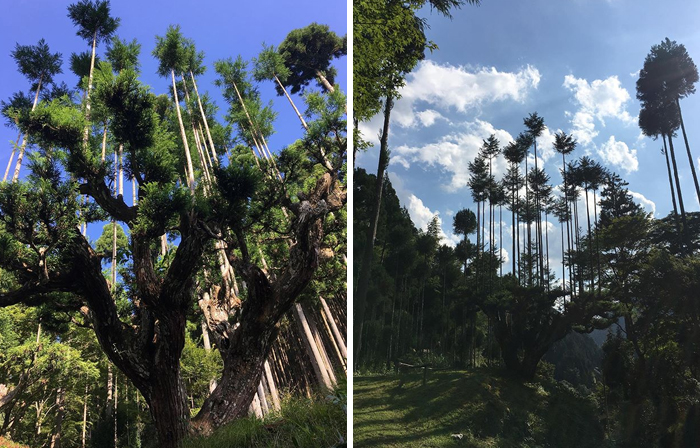
Apparently, This Ancient Japanese Technique From The 14th Century Allows People To Produce Lumber Without Having To Cut Down Trees
Japan is an intriguing country (especially for an outsider) that never ceases to amaze and inspire people by striving for perfection. It appears that the pursuit of excellence is something that’s deeply embedded in the culture, and it shows in different areas of life and various ways.
The majority of us are already familiar with the concept of bonsai—a Japanese art form dating back over a thousand years, which produces small trees that mimic the appearance of full-size trees. But many still haven’t heard about daisugi. While its technique has similarities to that of bonsai, the result it produces is vastly different.
Apparently, this technique that dates back to the 14th century was news to a lot of people. Having received more than 17k likes on Twitter, the post written by the user Wrath Of Gnon went viral on other social media platforms as well, including Imgur and Reddit.
More info: Twitter
Apparently, there’s an ancient Japanese forestry technique called “daisugi”
Image credits: wrathofgnon
Image credits: wrathofgnon
Originally invented by the people of the region of Kitayama, the method was used to solve the problem of shortage of seedlings. There is little flat land in the region, and planting and raising trees on the steep slopes proved extremely difficult. As a result, daisugi tailoring allowed arborists to reduce the number of plantations, make the harvest cycle faster, and produce denser wood as well.
Over the years, the popularity of such tree tailoring has declined. Today, these types of cedar mostly grow in well-kept gardens because of their slender and elegant appearance
Identical to the bonsai technique, this method developed back in the 14th century
Image credits: wrathofgnon
Image credits: wrathofgnon
Image credits: wrathofgnon
It is used on sugi—a Japanese cedar or Japanese redwood in English
Image credits: wrathofgnon
The technique helped to produce lumber that’s way more dense than that of a regular sugi
Image credits: wrathofgnon
Image credits: wrathofgnon
The unique appearance of daisugi makes them appealing to have in ornamental gardens
Image credits: wrathofgnon
Image credits: wrathofgnon
And there are still massive ancient daisugi around
Image credits: wrathofgnon
Image credits: wrathofgnon
Here’s how people responded to the Twitter thread
Image credits: wrathofgnon
Image credits: wrathofgnon
Image credits: 1000yearhouse
Image credits: DHertzLocker
166Kviews
Share on FacebookThis is really cool! I always love the way the Japanese treat gardening as an art form. I wish this method was more prevalent!
same! japanese traditions are really fascinating, especially with their gardens
Load More Replies...As a woodworker, i can appreciate dense straight grain. Normally that means old-growth trees, which we really should leave where they are.
This is really cool! I always love the way the Japanese treat gardening as an art form. I wish this method was more prevalent!
same! japanese traditions are really fascinating, especially with their gardens
Load More Replies...As a woodworker, i can appreciate dense straight grain. Normally that means old-growth trees, which we really should leave where they are.




















298
26